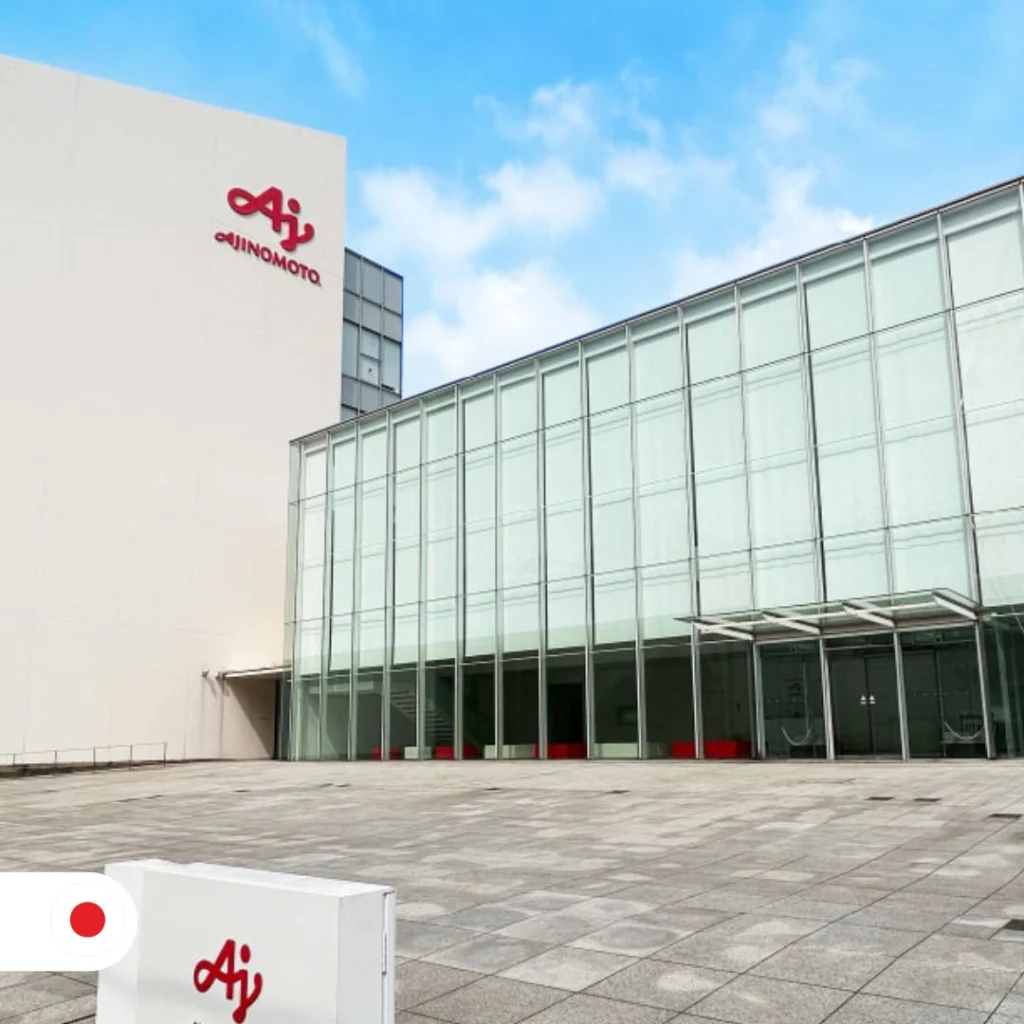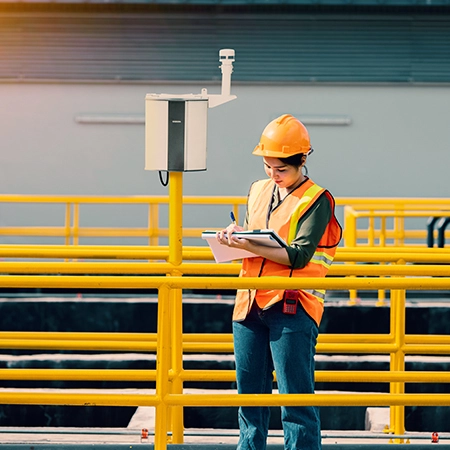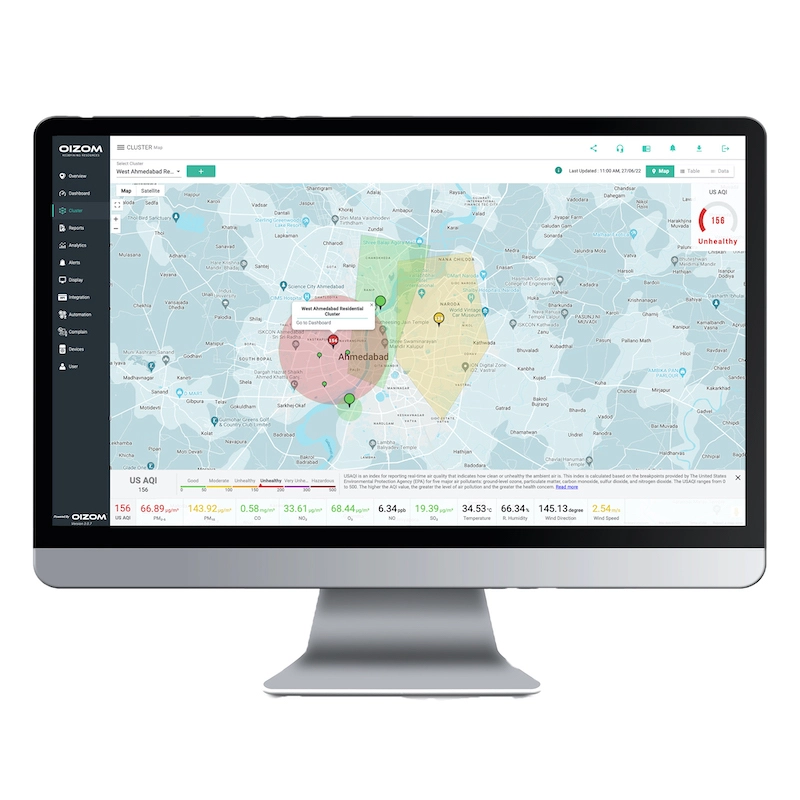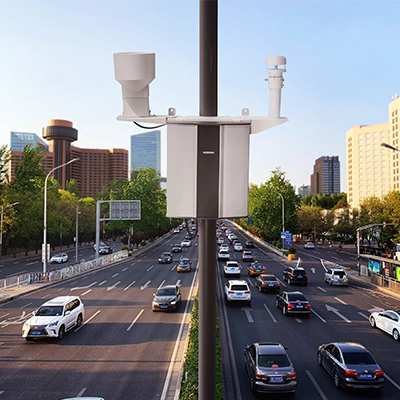Real‑Time Odour & Air Quality Monitoring at Ajinomoto Food Processing Plant, Japan
Ajinomoto, in partnership with Osumi Japan, implemented Oizom’s Odosense Custom to automate odour control, ensure cleaner air, and improve worker safety at their food processing facility.
Japan
September 2025
Industrial Odour
Ajinomoto, Japan
Odosense Custom
Industrial Odour Monitoring
Japan
September 2025
Industrial Odour
Ajinomoto, Japan
Odosense Custom
Industrial Odour Monitoring
Introduction: Enabling Smarter Emission Control at Ajinomoto
Ajinomoto Group, a global leader in food processing and amino science, operates high-precision manufacturing facilities in Japan, where environmental hygiene is as critical as product quality. In collaboration with Osumi Japan, Ajinomoto deployed Oizom’s Odosense (custom configuration) to monitor emissions of HCl, TVOC, and SO₂ continuously. This deployment enables the plant to maintain ambient air quality, automate odor control, and enhance worker safety, aligning with the approach adopted in similar industrial settings worldwide.
Challenges: Addressing Emissions in Sensitive Food Processing Environments
In a facility where minute odors and gas emissions can affect product integrity and worker health, Ajinomoto faced multiple constraints:
- Emission Spikes of Corrosive Gases: Processes involving acid cleaning, chemical additives, or fermentation produced transient levels of HCl, TVOC, and SO₂, demanding precise detection and mitigation.
- Reactive Odour Control Systems: The existing deodorization mechanisms operated on fixed schedules or manual triggers, often over-consuming reagents or failing to respond to sudden gas surges.
- Worker Comfort & Air Quality: Even internal zones needed protection to ensure staff weren’t exposed to fluctuating concentrations.
- Compliance & Documentation: To meet Japan’s industrial hygiene and emissions norms, Ajinomoto required timestamped, traceable logs of odor and gas levels.
- Integration & Automation Needs: The solution had to integrate with existing deodorizer systems (relay/automation), trigger actions, and feed data to centralized dashboards.
Solution: Odosense Custom for Automated Odour Management
Oizom and Osumi Japan deployed a custom version of Odosense tailored for Ajinomoto’s gas profile. The system was engineered to:
- Monitor HCl, TVOC, and SO₂ continuously in real time.
- Provide threshold-based alerts through the Envizom platform.
- Trigger deodoriser or neutraliser systems via relay automation when limits are exceeded.
- Visualise historical and live data via dashboards for operations, safety, and compliance teams.
This configuration enabled Ajinomoto to transition from a schedule-based odor mitigation model to a fully data-driven, responsive control system.
Transformation: Tangible Operational & Safety Gains
With Odosense in place, Ajinomoto achieved:
- Automated Odour Response: The deodorizer system now reacts instantly to gas spikes, reducing overuse and improving responsiveness.
- Steady Internal Air Quality: Internal work zones maintain stable odor and gas levels, ensuring better worker comfort and safety.
- Insight-Driven Mitigation Strategy: Through trend charts, Ajinomoto identified micro-peaks in emissions and adjusted process timings or ventilation settings accordingly.
- Seamless Compliance & Reporting: Envizom’s auto-generated logs simplify regulatory audits and internal tracking, saving hours that would have been spent on manual record-keeping.
- Reduced Chemical Usage: Because deodorizer activation is now precise, reagent consumption dropped, delivering cost savings.
Broader Outcome: From Compliance to Competitive Differentiation
The adoption of Oizom’s solution delivered results beyond compliance:
- More Innovative Food Manufacturing: Ajinomoto demonstrates how high-performance food processing can be combined with clean, controlled environments.
- Scalable Model: The success at this site informs rollouts at other Ajinomoto locations and similar food/biotech plants globally.
- ESG & Brand Trust: Transparent odor control strengthens environmental credentials, reassuring regulators, partners, and communities.
Conclusion: Odour Control That Listens & Reacts
By installing a customized Odosense system in partnership with Osumi Japan, Ajinomoto has elevated its environmental governance from manual routines to real-time, self-regulating odor management. Through data insights, automation, and continuous monitoring, the plant now operates with greater confidence, compliance, and worker comfort. This project marks a significant benchmark for how food processing facilities can integrate intelligent air quality control into their core operations.
Do you have a specific requirement?
Schedule a call with our expert team and get the right solution
for your project.






